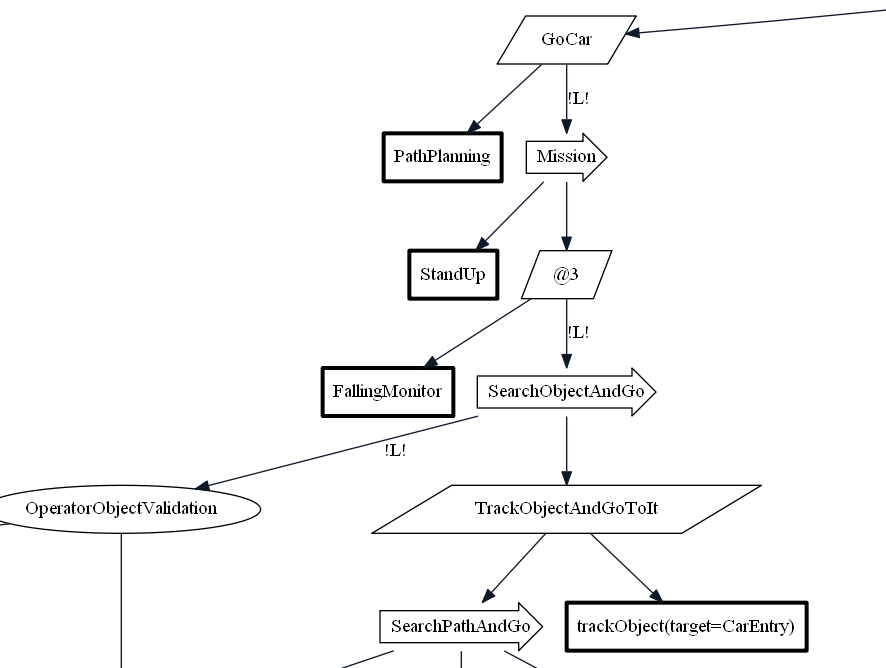| |
Behavior Trees
Description: Behavior Trees IntroKeywords: decision_making
Tutorial Level: BEGINNER
Next Tutorial: decision_making/Tutorials/BehaviorTree(C++)
Introduction
We would like a system that is more general the FSMs,more structured than programs, and lighter weight than planners. Behavior trees were developed by Geoff Dromey in the mid-2000s in the field of software engineering, which provides a modular way to define software in terms of actions and preconditions. They were first used in Halo 2 and were adopted by a number of other games such as Spore.
HTN + HSM = Behavior tree
- HTN - Hierarchical task network (planning)
- Goal directed but ignores execution
- HSM - Hierarchical finite state machines
- Reactive (state oriented) but not goal oriented
- Intuitive but worksome
- Behavior tree
- Task-oriented rather than state-oriented
- Modular, reusable behaviours
- Can easily be built up into hierarchies

Behavior tree building blocks
- Tasks [boxes] - A preemptive task. Can be a local function or an actionLib call, will return true, false or error code.
- Sequencer [right arrow] - all tasks until one fails
- Selector [circle] - all tasks until one succeed
- Parallel [parallelogram] - do in parallel all tasks connected
- Decorator [text on the edges] - filters on return values (and execution)
The behavior tree snippet above reads:
- Goto car and in parallel plan paths while doing the mission
- During the mission first stand up and then in parallel monitor not to fall while searching for an object and going towards it
- The object is first validated by an operator, and then tracked while the robot approaches it... etc...
- !L! is a while decorator. It continues as long as the task returns false. It is used in the scenario above to assure that if the mission fails if will be re-run, if the object serch and go failed it will be re-run, and if the operator did not respond the rutine will be executed again.
Reading material
FSM, HSM and Behavior treeshttp://www.cs.umd.edu/class/spring2013/cmsc425/Lects/lect20.pdf
Behavior trees http://aigamedev.com/insider/-presentations/behavior-trees/







